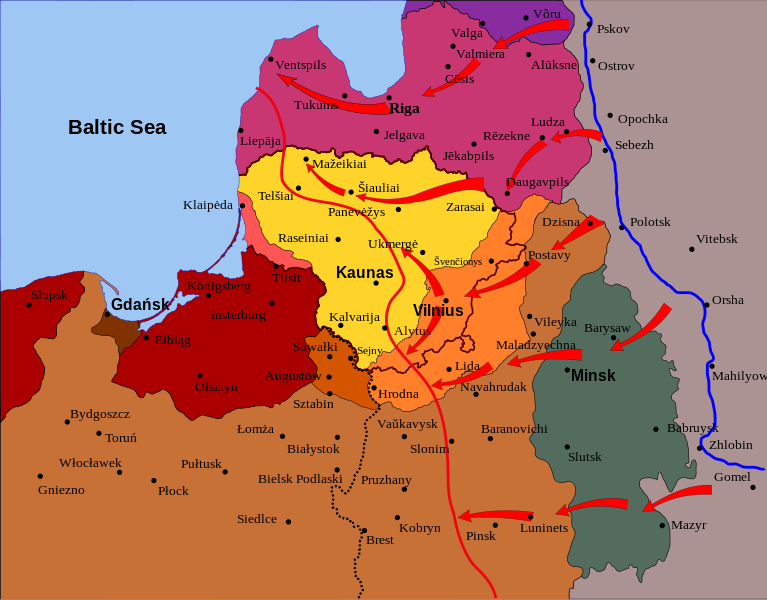
November 18th, 1918. The Soviet Westward Offensive of 1918-1919 begins. In March of 1919, the Communist International (Comintern) – essentially, a powerful weapon created by the Russian Bolsheviks – officially proclaimed that it will use the military force to invade, occupy and destroy the human civilization as we know it and transform our world into a global Bolshevist totalitarian state.
However, it only made public what the Bolsheviks had been already doing – and not exactly in secret. By March of 1919, the “Soviet Westward Offensive” was under way for almost four months.
The official (i.e. publicly stated objective) of this offensive was to replace the withdrawing (according to the terms of the Armistice of 11/11/1918) German Imperial Army. And thus to re-take the lands lost by Russia in 1917 and as the result of the Brest-Litovsk Peace Treaty with the victorious Central Powers.
In reality, the Bolsheviks and their leader Vladimir Lenin had far more ambitious objectives. They wanted not only to restore the Russian Empire (transformed into the Soviet Russia, of course), but also to occupy the whole newly-minted independent Poland (making it a Soviet Poland) and then to invade and occupy now all but defenseless Germany.
And thus to “repeat the Russian experience” – by transforming the liberal-democratic November Revolution in Germany into the Bolshevist Revolution. With the ultimate objective of establishing the “German Soviet Federative Socialist Republic” (GSFSR) or something of that nature. Lenin and his co-conspirators planned to make the GSFSR the springboard, the staging ground, the trigger for the “World Revolution” (i.e. the global Bolshevist uprising).
However, this offensive was only moderately successful (to put it mildly) even in its intermediate objectives. And in its attempts to occupy Poland and (especially) Germany it was a total and miserable failure.
The initially successful offensive against the Republic of Estonia ignited the Estonian War of Independence which ended with the Soviet recognition of Estonia. The war against Republics of Latvia and Lithuania was (initially) more successful for the Soviets, and resulted in the Latvian Socialist Soviet Republic and Lithuanian Soviet Socialist Republics being established.
However, a few years later the Soviet Russia had to recognize the independence of Latvia and Lithuania as well (they were occupied and annexed into the Soviet Union only in 1940 – twenty years later). Ukraine was split between the Soviet Russia and Poland and so was Belarus.
On its southern flank the offensive had two strategic objectives – (1) take back Bessarabia, a former Russian province that united with neighboring Romania after two months of independence as the Moldavian Democratic Republic; and (2) support the Hungarian Soviet Republic which at that time was also at war with Romania. Both attempts resulted in a spectacular failure.
The Soviet Western Offensive (and the Russian Civil War which was raging at the same time) predictably created a wave of political and cultural refugees. Thousands of these refugees ended up in Berlin which became the second most important home (in terms of numbers) for Russian refugees after Prague.
Some of these refugees (mostly those with German roots) created Aufbau Vereinigung – an anti-Bolshevist organization which was instrumental in making Adolf Hitler acutely aware of the Bolshevist existential threat to Germany, Europe and the whole Western Civilization.
One of its leaders – Alfred Rosenberg – subsequently became the member of the Thule Society, a close associate of Adolf Hitler and one of the leaders of the Third Reich.